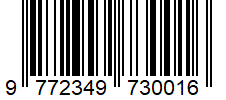Demographic Ageing, a Social Problem in the Rural Area. A Regional Study in Romania
Authors: Puiu Florin, Turek Rahoveanu Adrian
DOI: https://doi.org/10.37082/IJIRMPS.ICTIMESH-23.2
Short DOI: https://doi.org/gthcg9
Full-text Research PDF File:
View |
Download
Abstract: One of the key demographic challenges facing rural areas is the ageing of the population, and the migration of young people, not only among farmers but also among the rural population in general. The ageing of the population is a problem that can be found not only in Romania but also at the European level. This trend is visible in the transformations of the age structure of the population and is reflected in an increasing share of people aged 65 and over, coupled with a decreasing share of young, active, able-bodied people in the total population. This demographic phenomenon is even more acute in rural areas, which face both ageing and depopulation. Abandoned villages are the result of rural depopulation based on several reasons: economic (loss of the ability to compete economically between farmers), social (ageing population or low level of qualification of the rural population) or psychological. Starting from these reasons of demographic ageing and the rural area's depopulation, in the paper's framework we proposed to analyze the phenomenon of young people's migration in Romania, as the main cause of the decline of the rural area. The analysis starts with the determinants of rural youth migration, assessing the impact of rural youth migration on agriculture and rural development and finally presents a series of policy and program interventions to reduce rural youth migration.
Keywords: Population Ageing, Youth Migration, Rural Development
Paper Id: 3.102
Published On: 2024-01-23
Cite This: Demographic Ageing, a Social Problem in the Rural Area. A Regional Study in Romania - Puiu Florin, Turek Rahoveanu Adrian - IJIRMPS Special Issue - International Conference on Trends & Innovations in Management, Engineering, Sciences and Humanities (January 2024). DOI 10.37082/IJIRMPS.ICTIMESH-23.2





 All research papers published in this journal/on this website are openly accessible and licensed under
All research papers published in this journal/on this website are openly accessible and licensed under 